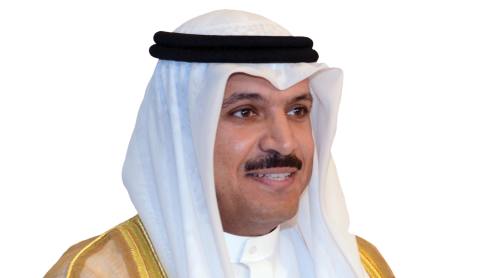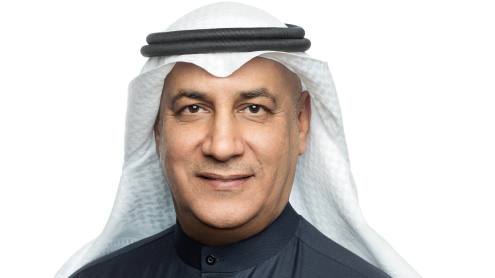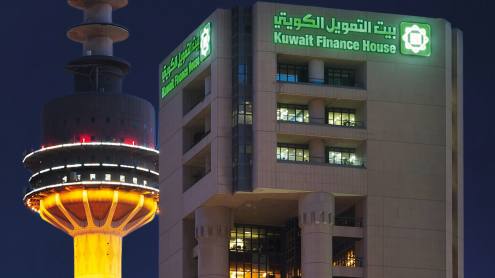Oil markets have had quite a year. April 2020, the beginning of Kuwait’s fiscal year 2020/2021, saw the Gulf state facing a dramatic collapse in government revenues for the year ahead. The unexpected implosion of the international production quota agreement underpinning oil prices since 2016 in early March, coupled with the shutdown of the world economy in the wake of the Covid pandemic, sent the price of oil — which is responsible for 80% of government revenues — plunging to its lowest level for 17 years.
Fast forward a year, and the bulls are back. Not only are global suppliers once again singing from the same hymn sheet, but the prospect of a resurgence in the global economy on the back of vaccine rollouts has led to forecasts of prices returning to levels not seen since the peaks of 2014. Such rises are far from certain, however, with the vulnerabilities of the market likely to become more pronounced as prices rise.
Supply discipline holds
Kuwait begins its new fiscal year for 2021/2022 on April 1, with the extreme shocks to both oil supply and demand of the previous year a thing of the past — at least for the time being.
The supply shock came in early March 2020, when Russia and Saudi Arabia — the twin architects of the production deal struck between Organisation of the Petroleum Exporting Countries (Opec) and other major producers that had underpinned prices since late 2016 — unexpectedly abandoned previously agreed cuts, flooding the market with cheaper oil in search of market share. The move, which stunned markets, was ill-timed to say the least, coinciding with the shuttering of much of the global economy with the rapid spread of Covid-19. Brent crude futures plummeted to below $20 a barrel, while US oil prices briefly entered into negative territory amid a storage shortage.
The prospect of a resurgence in the global economy on the back of vaccine rollouts has led to forecasts of prices returning to levels not seen since the peaks of 2014
In the face of such new realities, Saudi Arabia and Russia quickly buried their differences under pressure from then US president Donald Trump, agreeing to historic production cuts of 9.7 million barrels per day in early April. Although this helped prices recover from lows of around $25 per barrel in March to around $40 by June, the cut was later revised to 7.7 million from July 2020, 7.2 million in January, and 7 million in March.
Saudi Arabia further surprised markets in January 2021, announcing a further 1 million barrel cut from its own production levels in February, in a move that Saudi energy minister, Prince Abdulaziz bin Salman, described as a gift from Crown Prince Mohammed bin Salman “to support the market”.
The Saudi cut, which was formally extended until an undisclosed future date at Opec+’s March meeting, comes out of recognition that many states, and in particular Russia, are itching to raise production to cash in on higher prices, in a bid to replenish state coffers badly hit by Covid austerity measures.
“Saudi will have to ease off its voluntary cuts before long,” says Robin Mills, founder and chief executive of Dubai-based consultancy Qamar Energy.
“Looking ahead, Iraq’s compliance with the agreement is set to fall, Russia is going to keep pushing for production increases, and the UAE will become increasingly impatient.”
Such calls to ease production limits are only set to increase, after Brent prices rose to its highest level since late 2019 in early March, following a surprise agreement by Opec+ to keep overall production levels on hold, while allowing small production increases from Russia and Kazakhstan. Prices briefly rose to above $70 a barrel on March 8, after unsuccessful attacks by Yemen’s Houthi rebels on Saudi oil facilities in Dhahran and Ras Tanura alarmed the market.

Scoring off the rebound
Beyond such shocks, the recovery in prices has been sustained by the prospect of a global recovery in 2021 and 2022, as vaccine rollouts allow economies to gradually return to normal. After hovering at around $40 a barrel since early July, prices have steadily increased since early November, following Pfizer/BioNTech’s announcement of interim analysis that showed 90% of efficacy for its vaccine in protecting people from the transmission of the virus.
The development of several highly effective vaccines in record time has prompted predictions of a strong global economic recovery in 2021. The Organisation for Economic Co-operation and Development predicted in March that the global economy will grow by 5.6% in 2021, 1.4% higher than its previous forecast issued in November, on the back of global vaccine rollouts and the US’s $1.9tn stimulus plan.
Such expansion is set to fuel global demand for oil, with veteran analysts predicting the dawning of a new supercycle for the commodity. JPMorgan’s head of oil and gas, Christyan Malek, told clients in early February that he saw oil shooting “towards, or even above, $100 a barrel”, the Financial Times (FT) reported. Such predictions were echoed by Goldman Sachs analyst Jeffrey Currie, who told the FT that oil could trade at $80 or above.
“Such price levels are definitely possible if the strong demand recovery materialises and if Opec+ discipline holds,” says Mr Mills.
“Yet it might be harder to hold that discipline as prices rise, and/or if substantial Iranian exports reappear on the market.”
Kuwait has been one of the most enthusiastic supporters of the Opec+ deal since its inception in late 2016, a position that is unlikely to change anytime soon.
“The state of Kuwait plays an active role in encouraging coordination between producing countries, and supporting understanding to ensure the continued success of this historic agreement that achieves stability in the oil markets,” the Ministry of Oil said in a statement in early March ahead of the most recent Opec+ meeting.
The sustained growth in oil revenues since November has been good news for Kuwait’s public purse, after lower prices in the first half 2020 forced the government to trim spending.
“Whilst Brent flirting [at around $70 a barrel] is approaching ceiling threshold levels which could prompt demand destruction, higher fiscal breakeven Opec+ producers can better manage their fiscal balances, with more favourable credit conditions now on the horizon,” said Ehsan Khoman, head of emerging markets research at MUFG.
Kuwait’s budget for 2021/2022 is based around an average oil price of $45 for the year, with a breakeven price of $90, according to S&P Global Platts.
Mohammed Al Fares, a board member at national oil company Kuwait Petroleum Corporation, was appointed as the country’s minister of oil, electricity and water in December. Mr Al Fares became the eighth oil minister to be appointed in as many years, with ministerial positions across cabinet subject to constant scrutiny from an often hostile parliament.
At time of writing, Mr Al Fares remains in post, having been reappointed in early March, following the resignation of the previous government in January. Yet the fundamental trajectory of oil policy, which is determined by a supreme petroleum council led by the country’s prime minister, is unlikely to be significantly swayed by disputes with parliament.













